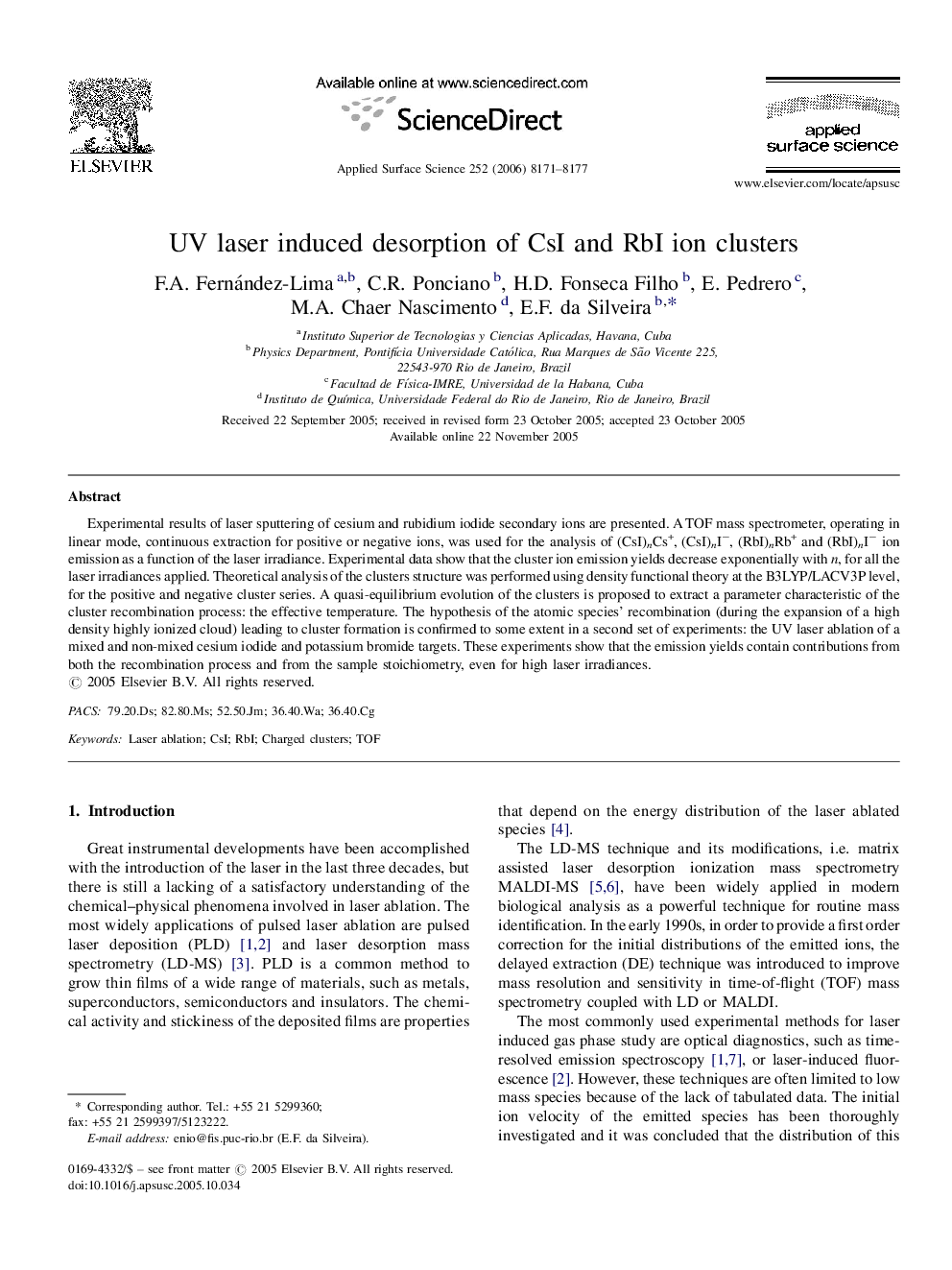| Article ID | Journal | Published Year | Pages | File Type |
|---|---|---|---|---|
| 5366196 | Applied Surface Science | 2006 | 7 Pages |
Abstract
Experimental results of laser sputtering of cesium and rubidium iodide secondary ions are presented. A TOF mass spectrometer, operating in linear mode, continuous extraction for positive or negative ions, was used for the analysis of (CsI)nCs+, (CsI)nIâ, (RbI)nRb+ and (RbI)nIâ ion emission as a function of the laser irradiance. Experimental data show that the cluster ion emission yields decrease exponentially with n, for all the laser irradiances applied. Theoretical analysis of the clusters structure was performed using density functional theory at the B3LYP/LACV3P level, for the positive and negative cluster series. A quasi-equilibrium evolution of the clusters is proposed to extract a parameter characteristic of the cluster recombination process: the effective temperature. The hypothesis of the atomic species' recombination (during the expansion of a high density highly ionized cloud) leading to cluster formation is confirmed to some extent in a second set of experiments: the UV laser ablation of a mixed and non-mixed cesium iodide and potassium bromide targets. These experiments show that the emission yields contain contributions from both the recombination process and from the sample stoichiometry, even for high laser irradiances.
Related Topics
Physical Sciences and Engineering
Chemistry
Physical and Theoretical Chemistry
Authors
F.A. Fernández-Lima, C.R. Ponciano, H.D. Fonseca Filho, E. Pedrero, M.A. Chaer Nascimento, E.F. da Silveira,
